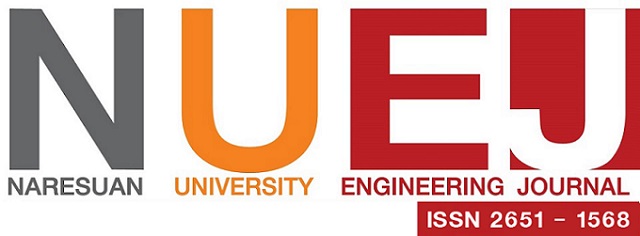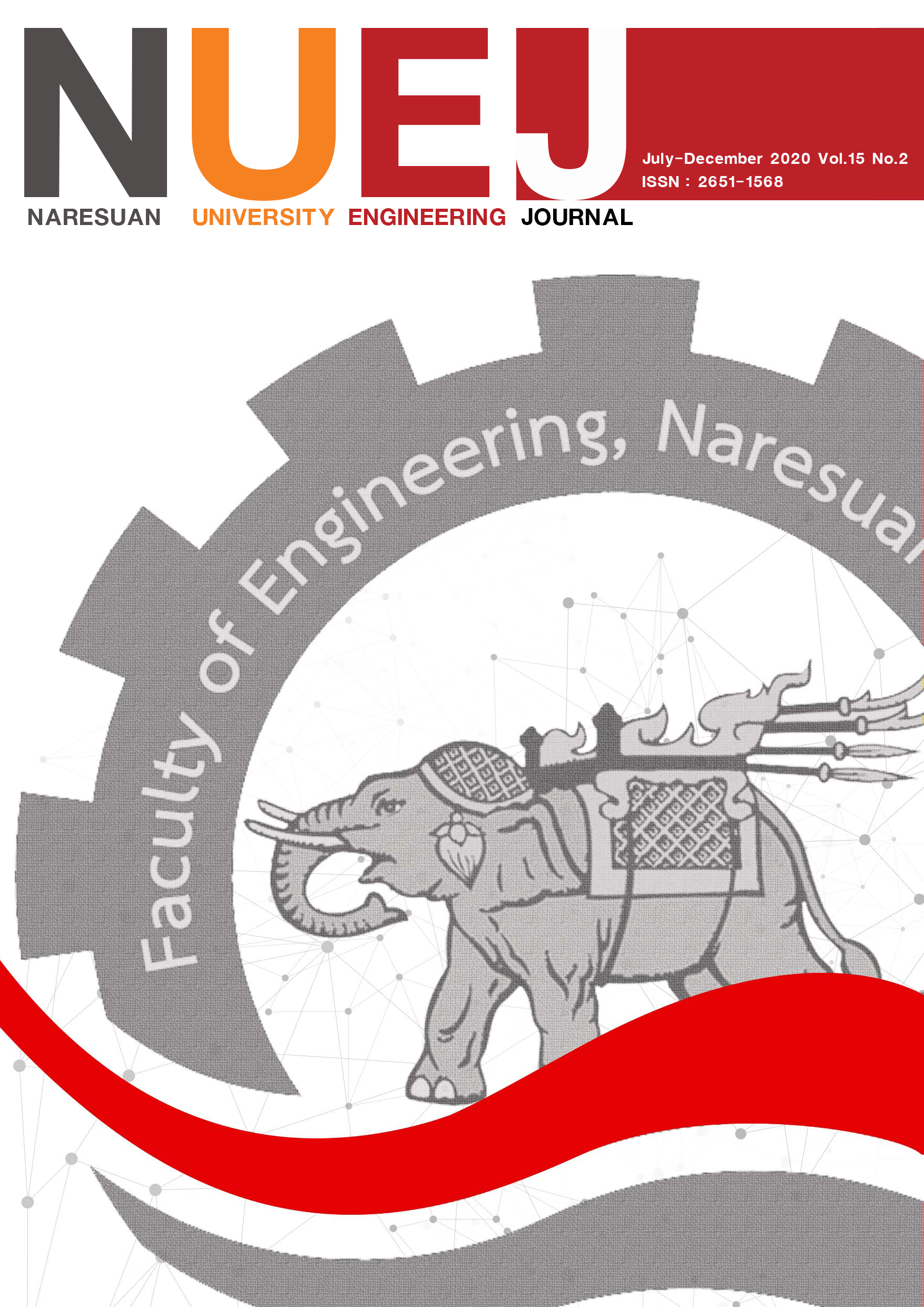การกำหนดตารางงานและเส้นทางวิ่งของพาหนะลำเลียงงานอัตโนมัติ: กรณีศึกษาอุตสาหกรรมการผลิต
Main Article Content
บทคัดย่อ
การกำหนดตารางงานและเส้นทางของพาหนะลำเลียงงานอัตโนมัติ (Automated Guided Vehicle - AGV) โดยพิจารณาปัญหาของโรงงานซึ่งฝ่ายผลิตมีระบบการผลิตทั้งแบบเดิมและแบบใหม่ร่วมกัน ทั้งนี้ 2 ระบบนี้มีความต้องการด้านการลำเลียงวัสดุที่ต่างกัน และมีความต้องการขนย้ายอุปกรณ์ขนถ่ายหลายครั้งในแต่ละกะการทำงาน หากการขนย้ายล่าช้าจะทำให้สายการผลิตต้องหยุดการทำงานชั่วขณะ วัตถุประสงค์หลักของงานวิจัยนี้เพื่อหาจำนวน AGV ที่เหมาะสมที่สุด ที่ทำให้เวลาว่างงานรวมของสถานีงาน และ AGV ต่ำที่สุด
กฎการกำหนดงานถูกออกแบบเพื่อใช้เป็นหลักเกณฑ์ในการกำหนดตารางงานของ AGV และใช้แผนภูมิคนกับเครื่องจักรเพื่อพิจารณาความสัมพันธ์ของการทำงานระหว่างสถานีงาน และ AGV ปัญหาวิถีสั้นสุดกำหนดเส้นทางวิ่งของ AGV จากจุดหนึ่งไปยังอีกจุดหนึ่งโดยใช้เวลาน้อยที่สุด ทั้งนี้พิจารณาทั้งเวลาการวิ่ง เวลาการนำของลงและยกของขึ้นของ AGV ตลอดจนการกีดขวางของรถคันอื่นบนเส้นทางวิ่ง
ข้อมูลจากกรณีศึกษาในอุตสาหกรรมการผลิตถูกนำมาทำการวิเคราะห์เส้นทางการวิ่งของ AGV โดยพิจารณาทั้งแบบทิศทางวิ่งรถทิศทางเดียวและสองทิศทาง สำหรับจำนวน AGV ที่ต่างกัน และกฎการกำหนดงานทั้งเชิงรับและเชิงรุก ผลการทดลองสามารถสรุปได้ว่าควรใช้กฎการกำหนดงานเชิงรุก และกำหนดเส้นทางการวิ่งของ AGV แบบสองทิศทาง โดยใช้ AGV เพียงคันเดียว จะทำให้เกิดอัตราการว่างงานโดยรวมของทั้งสถานีงาน และ AGV น้อยที่สุดที่ร้อยละ 2.98
Article Details
References
Baker, K. R., & Trietsch, D. (2009). Principles of sequencing and scheduling. John Wiley.
Bocewicz, G., Nielsen, I., & Banaszak, Z. (2014). Iterative multimodal processes scheduling. Annual Reviews in Control, 38, 113–122.
Fazlollahtabar, H., & Saidi-Mehrabad, M. (2015). Methodologies to optimize automated guided vehicle scheduling and routing problems: A review study. Journal of Intelligent and Robotic Systems, 77, 525–545.
Lacomme, P., Larabi, M., & Tchernev, N. (2013). Job-shop based framework for simultaneous scheduling of machines and automated guided vehicles.International Journal of Production Economics, 143, 24–34.
Lee, C. W., Wong, W. P., Ignatius, J., Rahmana, A., & Tseng, M.-L. (2020). Winner determination problem in multiple automated guided vehicle considering cost and flexibility. Computers & Industrial Engineering, 142, 106337.
Leung, J. Y-T. (2004). Handbook of scheduling: algorithms, models, and performance analysis. Chapman & Hall/CRC.
Lyu, X., Song, Y., He, C., Lei, Q., & Guo, W. (2019). Approach to integrated scheduling problems considering optimal number of automated guided vehicles and conflict-free routing in flexible manufacturing systems. IEEE Access, 7, 74909-74924. https://doi.org/10.1109/ACCESS.2019.2919109.
Office of Industrial Economics. (2018). Report on industrial economics 2018 and trends for 2019. Ministry of Industry Thailand.
Pinedo, M. L. (2009). Planning and scheduling in manufacturing and services. Springer.
Smolic-Rocak, N., Bogdan, S., Kovacic, Z., & Petrovic, T. (2010). Time windows based dynamic routing in multi-AGV Systems. IEEE Transactions on Automation Science and Engineering, 7(1), 151-155.
Umar, U. A., Ariffin, M. K. A., Ismail, N., & Tang, S. H. (2015). Hybrid multiobjective genetic algorithms for integrated dynamic scheduling and routing of jobs and automated-guided vehicle (AGV) in flexible manufacturing systems (FMS) environment. International Journal of Advanced Manufacturing Technology, 81, 2123–2141.
Xiao, H., Wu, X., Zeng, Y., & Zhai, J. (2020). A CEGA-Based optimization approach for integrated designing of a unidirectional guide-path network and scheduling of AGVs. Mathematical Problems in Engineering, 2020, 1-16. https://doi.org/10.1155/2020/3961409.

